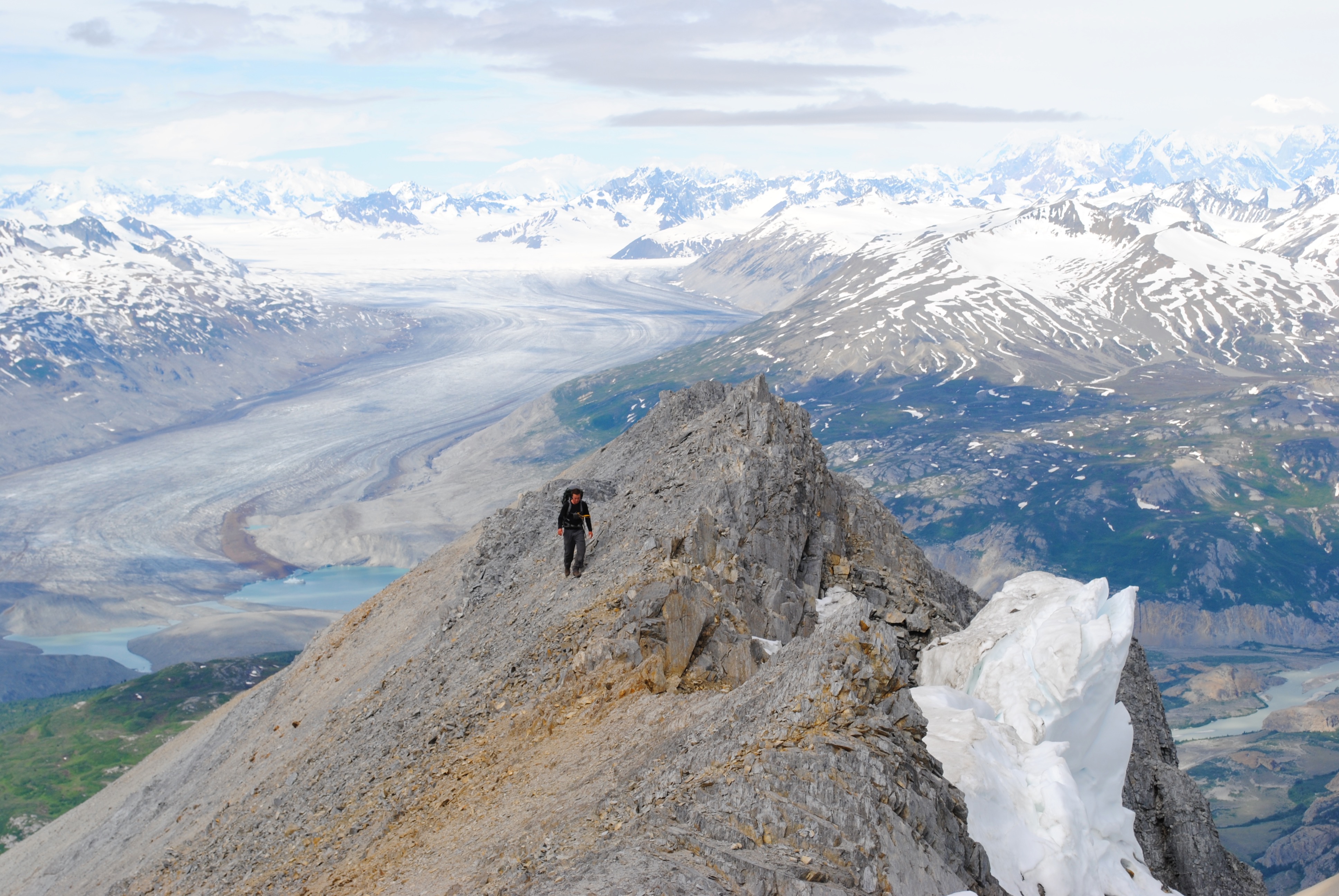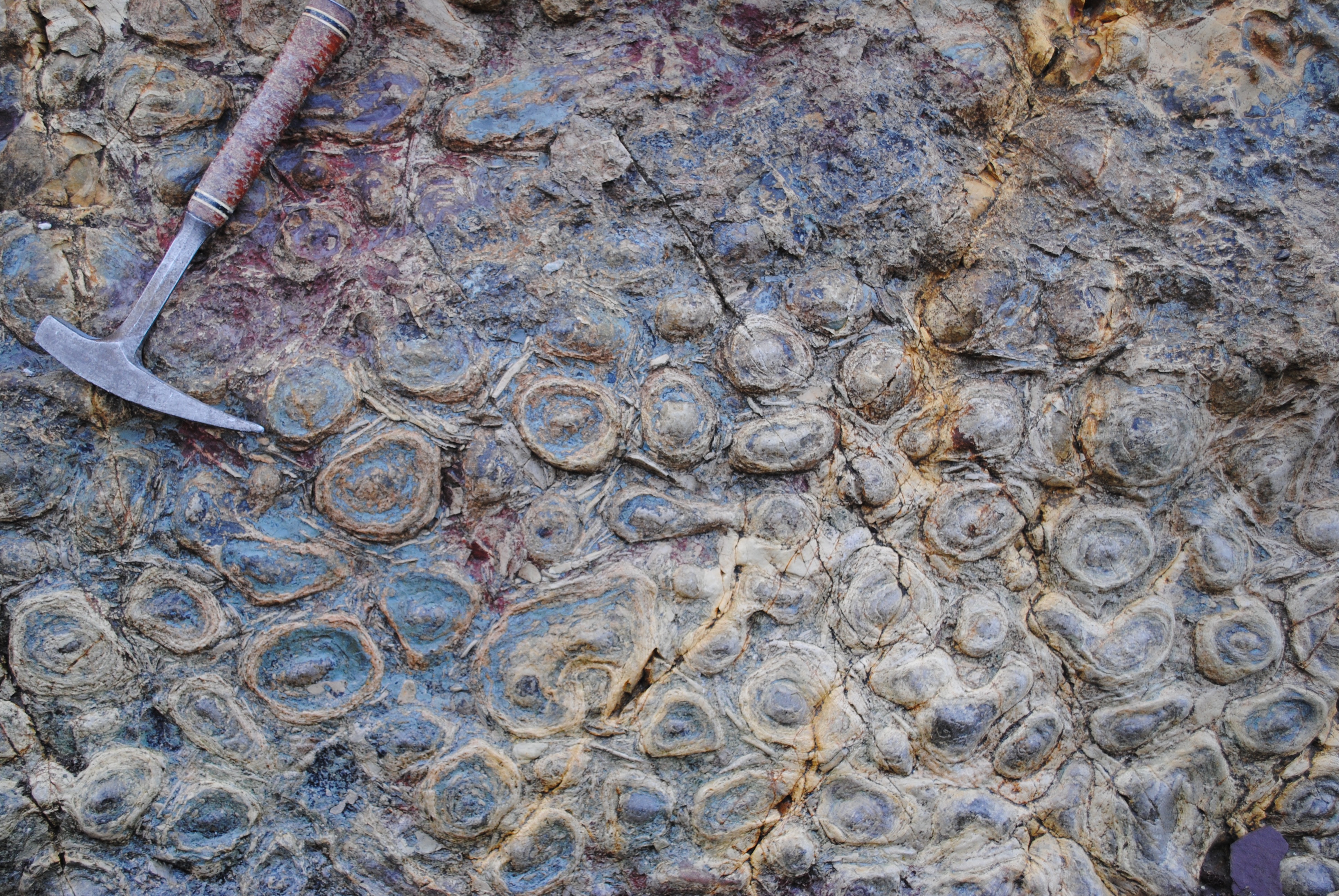Our group works on a diverse array of projects that are spread all over the world. Here are some descriptions of projects that we are currently focused on, most of which are centered on the evolution of the circum-Arctic region.

Tectonic Evolution of the Circum-Arctic
Large-scale transport of crustal fragments relative to major cratons is a widely accepted conceptual model, but demonstrating the magnitude of displacement once offsets exceed the scale of typical geological markers and understanding the kinematic processes involved remains challenging. Recent models for the Paleozoic tectonic evolution of the Arctic highlight significant, yet poorly understood, margin-parallel transport of crustal fragments relative to the North American craton (e.g., McClelland et al., 2021); however, very little is known about the hypothetical structures that accommodated these profound displacements. Our current work is focused on understanding the potential for large-scale transport of crustal fragments along continent-scale strike-slip systems in the Arctic, while also providing new insights into the Neoproterozoic–Paleozoic evolution of the poorly understood Arctic margin of North America.
Alaska and Yukon
Current research in Alaska and Yukon is focused on reconstructing the geologic history of the northwestern margin of Laurentia (North America). This includes working in accreted terranes, such as the Arctic Alaska–Chukotka microplate, as well as along the tectonized western margin of the craton. We are currently studying the Kaltag-Porcupine fault system, a craton-bounding structure that potentially accommodated the displacement of Arctic Alaska and other Arctic terranes across the northern margin of Laurentia, as well as a complex suite of Devonian–Carboniferous basins that cover both Yukon and northern Alaska. This multidisciplinary project is part of an overarching aim to inform fundamental tectonic models for the evolution of the Arctic and northwestern margin of North America, all of which is in collaboration with colleagues from the University of Iowa and the Yukon and United States geological surveys.
Ellesmere Island
The Pearya terrane of northern Ellesmere Island, Nunavut, Canada, is a displaced fragment with crystalline basement that lies outboard of deep water, passive margin deposits of the Franklinian Basin. This terrane is one of the most oft-cited examples of large magnitude terrane translation in the field of Tectonics, but its accretion and translation history is poorly understood. Accretion by arc-continent collision and non-displacement models are equally viable at this point. The ultimate goal of this research project is to document the accretion and translation history of the Pearya terrane. The project entails integrated (1) kinematic and geochronologic analysis of major faults at the southern Pearya terrane margin and (2) detailed stratigraphic comparison across the terrane boundary through sandstone petrography, detrital zircon U/Pb geochronology and Hf isotopes, as well as major and trace element geochemistry and Nd isotopes on mudstone. This project is in collaboration with colleagues at the University of Iowa and BGR.
Svalbard
Neoproterozoic sedimentary and volcanic successions in the North Atlantic region provide a fragmented record of the assembly and break-up of the supercontinent Rodinia (e.g., Cawood et al., 2016). These deposits were variably metamorphosed during the mid-Paleozoic Caledonian Orogeny, which deformed the Neoproterozoic–early Paleozoic continental margins of northeastern Laurentia and western Baltica (present coordinates) and dispersed para-autochthonous and allochthonous continental fragments throughout the North Atlantic and Arctic region (Harland, 1997). Svalbard’s pre-Caledonian basement is divisible into at least three tectonic domains, the Eastern, Northwestern, and Southwestern, whose origins and displacement histories remain controversial. Particularly, interpretations of the geological history of Svalbard’s Southwestern Basement Province are controversial, which is in part due to its involvement in the Tertiary West Spitsbergen fold-thrust belt, as well as the general paucity of radiometric and biostratigraphic age constraints from the Mesoproterozoic–early Paleozoic metasedimentary successions. We are currently working with colleagues from the University of Uppsala and AGH to examine the stratigraphy, provenance, and tectonothermal history of this basement province to provide key piercing points for the Paleozoic–Mesozoic evolution of the North Atlantic. In addition, we have multiple active projects in the Eastern basement domain.

Neoproterozoic–Paleozoic Paleoenvironmental Evolution of the Circum–Arctic
The circum-Arctic and associated northern regions host some of the spectacularly exposed but poorly constrained records of Neoproterozoic and early Paleozoic Earth history. Our group has been focused on a diverse array of projects from Alaska to Svalbard that aim to use these records to inform global models about the evolution of life and environment.
Alaska and Yukon – Ediacaran and Early Paleozoic
The Ediacaran Period appears to record one of Earth’s most significant geobiological transitions – a first-order change in the composition of the world’s oceans and atmosphere, coupled with the advent and proliferation of large, multicellular eukaryotes. Critically, the details of these profound changes in the geosphere and biosphere and their inter-relationships are still poorly understood. Our current work in the Ogilvie, Wernecke, and Mackenzie Mountains of Alaska and Yukon/Northwest Territories aims to fundamentally address the relationship between the advent of Ediacara-type organisms and early mobile bilaterians and the physiological and environmental conditions that enabled this transition through an integrative sedimentological, paleontological, geochronological, and geochemical examination of shelf-to-slope transects in fossiliferous Ediacaran strata.
Svalbard – Tonian and Cryogenian
Global paleontological and biomarker datasets suggest eukaryotic organisms diversified and rose to ecological dominance in the middle Neoproterozoic Era; however, many compilations that form the basis for these interpretations include few data from early Neoproterozoic (Tonian) sedimentary successions. The ca. 950–820 Ma Veteranen Group of Svalbard, Norway, represents a largely unrecognized resource for understanding the cadence of Tonian eukaryotic evolution. Populations of well-preserved microfossils were reported here over three decades ago by Andy Knoll and Keene Swett, and recent unpublished work reveals that the fossiliferous exposures are also thermally immature and may contain intact biomarkers. We are currently studying the Veteranen Group to generate new, age-calibrated biomarker and microfossil datasets within a paleo-environmental framework to calibrate the Tonian record of biological evolution and ecological innovation.

Tectonics of New England
Our group is engaged in a diverse array of local projects throughout New England, mostly focused on the tectonic history of Ganderia and Avalonia, two peri-Gondwanan terranes that accreted to the eastern composite margin of Laurentia during the Ordovician–Devonian. At the moment, we have active projects in Penobscot Bay, Maine, and throughout the Central Maine Basin from northern ME to southern VT/NH. In addition, we have an active project focused on Mesozoic magmatism in the White Mountains of NH.
